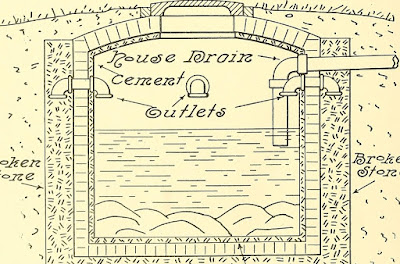Evelyn's New Blog: The Trouble with Cesspools and Wastewater Management
Evelyn's New Blog: The Trouble with Cesspools and Wastewater Management
https://evelynfandersen.blogspot.com/2020/05/the-trouble-with-cesspools-and.html
The Trouble with Cesspools and Wastewater Management
What is a cesspool?
A cesspool is a shallow system for disposing of sanitary waste. Although structures vary, most cesspools consist of a concrete cylinder with an open bottom or perforated sides. Sanitary waste from toilets, sinks, and washing machines enters the cesspool and percolates out the bottom.
The definition of “large-capacity” may vary from state to state. For example, some states define large-capacity cesspools based on the amount of waste or the volume capacity of the cesspool. Check with your permitting authority for more information. The transformation of cesspools and cesspool design has been very interesting to say the least.
What is a large-capacity cesspool?
The Environmental Protection Agency does not regulate the cesspools of single family homes or those of non-residential facilities that serve fewer than 20 persons per day and dispose of solely sanitary waste. However, these smaller cesspools may be regulated by state and local governmental agencies (e.g., departments of health).
Cesspools of any size that receive waste other than sanitary waste (e.g., from commercial or industrial processes) are industrial wells and are subject to regulations.
Although now illegal, wastewater has often been disposed of in a cesspool or dry well. Construction was similar to a shallow dug well lined with bricks or stone. It was often 6 to 10 feet in diameter and 15 to 20 feet deep. This is why all cesspools now need to be replaced with new septic systems according to your local health department's rules and regulations.
Cesspools and Groundwater Contamination
The depth was less than that of groundwater, thus the name“dry” well. Cesspools are a serious potential source of groundwater contamination and a definite safety hazard.In the past, Kansas law permitted seepage pits following the septic tank for wastewater disposal.
These were holes in the ground filled with stone or other inert material such as broken brick. They were constructed according to state guidelines for size and depth. Construction of seepage pits has been illegal since May 1996, and existing pits must be properly disposed of whenever they are not used or not working.
Read more on this subject at the following website: https://www.epa.gov/uic/large-capacity-cesspools
from Ed's Environmental Blogger https://edwardhorbachukiii.blogspot.com/2020/05/the-trouble-with-cesspools-and.html
via Evelyn's New Blog https://evelynfandersen.blogspot.com/



